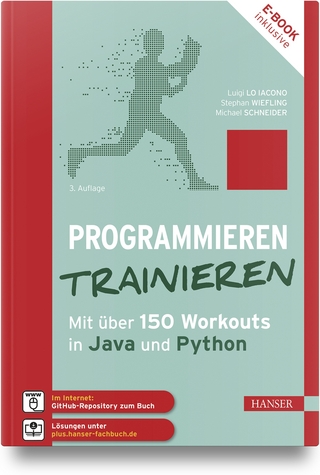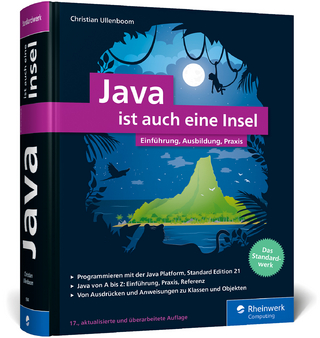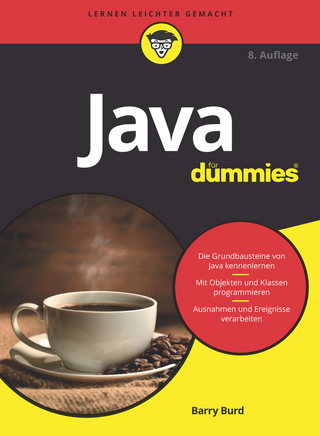
Practical Object-Oriented Development with UML and Java
Pearson (Verlag)
978-0-13-067238-4 (ISBN)
- Titel erscheint in neuer Auflage
- Artikel merken
For courses in Object-Oriented Design or in Object-Oriented Programming with Java offered in Computer Science and Computer Engineering departments at both the undergraduate and graduate levels.
This practical text teaches students how to actually build an object-oriented model using UML notation, and to implement the model using Java. It introduces all of the basic object-oriented fundamentals necessary to start applying and understanding the object-oriented paradigm without having to be an expert in computer science.
Richard C. Lee has more than 35 years experience developing and managing software projects. He has worked and/or managed leading-edge development in electronic publishing, embedded systems, large IMS projects, multi-media, operating support systems; process control, transaction processing, and switching. Being one of the earlier adopters of object-oriented technology, his current interest is making more object-oriented projects successful. William M. Tepfenhart is currently Program Director for the Software Engineering Department at Monmouth University. He has eighteen years of experience developing manufacturing, military, and telecommunications applications as a programmer, developer, and technologist. He has developed object-oriented systems over the past 17 years.
Introduction.
Object-Oriented Technology. Why Unified Modeling Language? Why Java? Our Approach to Object-Oriented Technology. Organization of the Book.
1. Managing Complexity with Abstraction.
Complex Systems. Abstraction Mechanisms. Service Activation Abstractions. Processing Control Abstractions. Relationships. Behavior. Rules.
2. The Object-Oriented Paradigm.
The Object-Oriented Paradigm. Principles of Object-Orientation. Object-Oriented Model of Computation.
3. Building a Specification Model.
Introduction to Use Cases. Documenting Use Cases. Guidelines for Developing Use Cases. Contracts. Recommended Approach.
4. Finding the Objects.
Object Oriented Analysis: Model of an Application Domain. Building the Object-Oriented Model. Identification of Objects, Classes, and Interfaces. Current Techniques. Traditional Techniques. Recommended Approaches.
5. Identifying Responsibilities.
What Is an Object? What Is an Attribute? What Is a Service? What Is a Method? Identifying Attributes. Specifying Attributes. Identifying Services. Specifying Services. Recommended Approach.
6. Specifying Static Behavior.
What is Behavior? Java Services (Operations) that Affect the Behavior Specification. Techniques for Specifying Static Behavior. Techniques for Specifying Control. Techniques for Documenting Control. Techniques for Documenting Static Behavior. Recommended Approach.
7. Dynamic Behavior.
Introduction. Techniques for Identifying Dynamic Behavior. Identifying and Specifying Events. Specifying Dynamic Behavior. Documenting Dynamic Behavior. Recommended Approach.
8. Identifying Relationships.
Accessing Another Object's Services. Relationships. Generalization. Identifying and Specifying Generalization/Specialization. Object Aggregation. Classification of Aggregation. Links Between Objects. Identifying and Specifying Links and Aggregations. Managing Relationships. Documenting Relationships. Recommended Approach.
9. Rules.
Introduction. Identifying Declarative Statements. Specifying and Documenting Rules. Mapping Rules to the Proper Object-Oriented Concepts. Documenting the Rules Using UML. Implementing Rules. Recommended Approach.
10. The Model.
Concepts. Concepts and Object-Oriented Model. Documenting Concepts Using UML. Subsystems. Organizing Subsystems. Identifying Subsystems. Documenting Subsystems. Recommended Approach.
11. Design.
Introduction. System Design. Detailed Design. Summary.
12. Java Fundamentals.
Introduction to the Java Language. Programming Elements. Primitive Data Types. What Is a Statement? Statement Flow Control. Branching Statements. Exception Handling. NameSpace. Type Conversion. Recommended Approach.
13. Implementing Class and Interface.
Components of a Class. Class Definition. Class Body. Nested, Inner, and Anonymous Inner Classes. Predefined Java Classes. Interface. Recommended Approach. Summary.
14. Implementing Static Behavior.
What Is a Service? Method Definition. Body. Passing Arguments. Identifiers Scope. Polymorphism. Creating Objects and Destroying Objects. Coding Guidelines. Recommended Approach.
15. Implementing Dynamic Behavior.
Elements of Dynamic Behavior. Simple State Diagrams. Nested State Diagrams. Concurrent State Diagrams.
16. Implementing Generalization/Specialization.
Introduction. Inheritance. Implementing Generalization/Specialization. The Object Class.
17. Implementing More Relationships.
Introduction. References. Static Members. Implementing Association. Implementing Aggregation. Implementing Static Members. Recommended Approach.
Appendix A: Unified Modeling Language.
Introduction. UML Diagrams. UML Glossary.
Appendix B: Java Language Summary.
Reserved Words. Comments. Literals. Variable Declaration. Variable Assignment. Operators. Loops and Conditions. Class and Interface Definitions. Objects. Arrays. Methods and Constructor Definitions. Packages and Importing. Exceptions and Synchronization.
Appendix C: How the Java Language Differs from C and C++.
C Data Types Not Supported. Primitive Data Types. Operators. Arguments. Arrays. Java Strings. Memory Management. Miscellaneous.
Bibliography.
Index.
| Erscheint lt. Verlag | 13.6.2002 |
|---|---|
| Sprache | englisch |
| Maße | 235 x 178 mm |
| Gewicht | 789 g |
| Themenwelt | Informatik ► Programmiersprachen / -werkzeuge ► Java |
| Informatik ► Software Entwicklung ► Objektorientierung | |
| Mathematik / Informatik ► Informatik ► Web / Internet | |
| ISBN-10 | 0-13-067238-6 / 0130672386 |
| ISBN-13 | 978-0-13-067238-4 / 9780130672384 |
| Zustand | Neuware |
| Haben Sie eine Frage zum Produkt? |
aus dem Bereich



